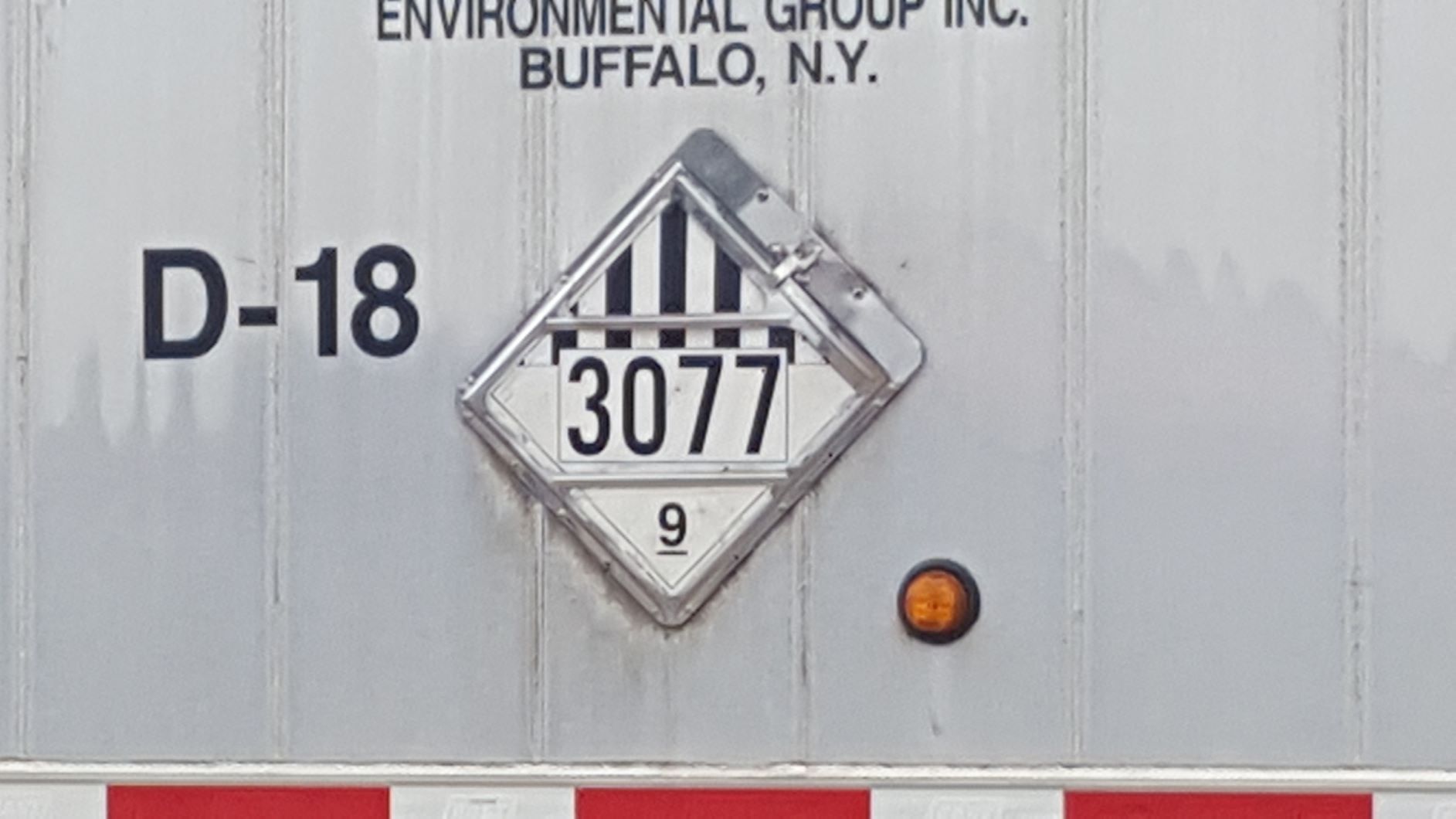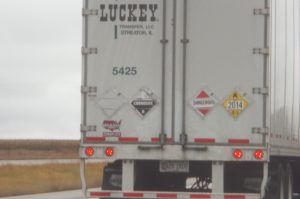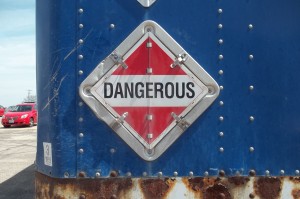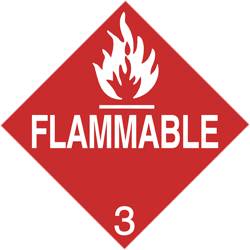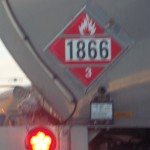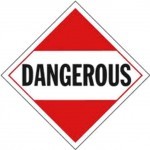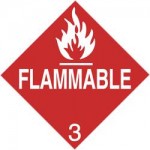Question1:
Hello,
I was hoping to get some clarification on this. I have highlighted the section in red that I am questioning. If I have less than 2,205lbs of just one type of hazard identified in table 2, non-flammable gas 2.2 to be exact, then it doesn’t need to be placarded? Or does it if it is over 1,001 lbs? It seems like the 1,001 lbs rule applies if you are combining 2 or more hazards identified in table 2?
https://www.govregs.com/regulations/49/172.504
(b) DANGEROUS placard. A freight container, unit load device, transport vehicle, or rail car which contains non-bulk packages with two or more categories of hazardous materials that require different placards specified in table 2 of paragraph (e) of this section may be placarded with a DANGEROUS placard instead of the separate placarding specified for each of the materials in table 2 of paragraph (e) of this section. However, when 1,000 kg (2,205 pounds) aggregate gross weight or more of one category of material is loaded therein at one loading facility on a freight container, unit load device, transport vehicle, or rail car, the placard specified in table 2 of paragraph (e) of this section for that category must be applied.
(c) Exception for less than 454 kg (1,001 pounds). Except for bulk packagings and hazardous materials subject to § 172.505, when hazardous materials covered by table 2 of this section are transported by highway or rail, placards are not required on
(1) A transport vehicle or freight container which contains less than 454 kg (1001 pounds) aggregate gross weight of hazardous materials covered by table 2 of paragraph (e) of this section; or
(2) A rail car loaded with transport vehicles or freight containers, none of which is required to be placarded.
Answer1:
Thank you for contacting me. I will try to answer your question below.
- The text highlighted in red applies to two separate placarding scenarios.
- 49 CFR 172.504(b) applies to the use of the DANGEROUS placard.
- §172.504(c) is an exception from the general placarding requirements of §172.504(a).
- If a vehicle contains less than 454 kg (1,001 lb) of a table 2 HazMat (e.g., Division 2.2), in a non-bulk packaging, placards are not required to be displayed on the vehicle.
- The DANGEROUS placard may be used when two or more HazMat of Table 2 in non-bulk packaging that require the display of placards are transported at the same time. The text you highlight in red states that if 1000 kg (2,205 lb) of HazMat is loaded at one facility, it must be placarded separately (per its own placarding requirements) and is not covered by the DANGEROUS placard.
I hope this helps. Please contact me with any other questions.
Question2:
Daniel,
Thank you for your response. So you are saying as long as we have under 1001 lb. of 2.2 cylinders we do not have to placard? Each cylinder weighs 60lbs. If we go over that weight threshold then we would have to placard? Can you have 1001lb in a pickup and 1001lb in a trailer behind it? Or 1001lb per combination?
Thanks!
Answer2:
Please see below.
- Correct. The placarding threshold for a Division 2.2 in a non-bulk packaging is 454 kg (1,001 lb) or more.
- A pickup towing a trailer are subject to the USDOT/PHMSA Hazardous Materials Regulations as two separate transport vehicles. Each with its own placarding requirement. Therefore, if you had 1,000 lb of Division 2.2 in the pickup and 1,000 lb of Division 2.2 in the trailer (both in non-bulk packagings) then no placards are required on either.
- A person operating a vehicle that does not require the display of placards does not require the HazMat endorsement on their CDL. They would require HazMat Employee Training with the additional component of Driver Training.
Contact me the next time your USDOT/PHMSA training is due to expire. |
Please contact me with any other questions.
Conclusion:

